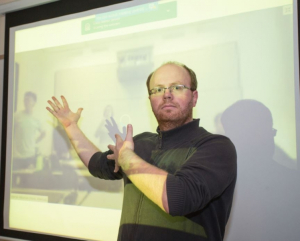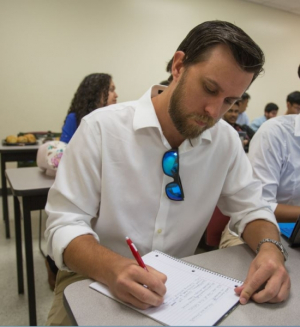Three days a week Konrad Krakowiak, assistant professor of civil and environmental engineering, stands before 13 students that make up his Cullen College engineering materials course to talk about concrete. Eighteen-hundred miles away, at MIT in Cambridge, Massachusetts, Professor Franz-Josef Ulm does the same thing, teaching the same course to his six students. While the classes are separate, eventually they merge through their end-of-semester project, when students present their ideas – via telecommunication – on creating sustainable concrete.
“The goal is to share information and exchange knowledge, to show how students in different institutions perform, present and approach problems,” said Krakowiak. “Our students can see how students with different opportunities solve problems and the MIT students can see how students at a public university operate and problem solve.” Krakowiak is positive about the opportunities for joint learning. He came to UH from MIT in September.
There will not be a single winner. Instead a winner is named from each school. So it’s less competition and more intercoastal cooperation.
“We are working on the same project, but everyone will have a different approach,” said Krakowiak. He says MIT students might have a more entrepreneurial approach and UH students work very hard to tackle projects with a different perspective. Each will benefit from the exchange of ideas and intellect, he says.
Materials matter
Though the course analyzes solid material properties related to engineering design, a lot of attention is given to concrete, which is Krakowiak’s area of expertise.
“Concrete and steel are the two basic materials of infrastructure,” said Krakowiak. “So students must know about this material, but because every ton of cement we produce creates roughly the same amount of carbon dioxide, we continue to look for better ways to make less carbon-intensive concrete.”
Thus the joint project was born. Students in Houston and Cambridge were charged with choosing any material to make sustainable concrete.
On Aug. 25, the two classrooms linked up to present their projects to one another, the big screen serving to combine the classes. All students asked questions of the others.
In the end, the success of the joint venture will be determined by the students, said Krakowiak.
So far the reviews are great.
“It’s exciting,” said James Schouten, majoring in civil engineering. “At first I was actually kind of nervous because these guys are from MIT, but after what we’ve learned thus far in the semester, I’ve gained a level of confidence and definitely learned more than I thought I would in this class.”

